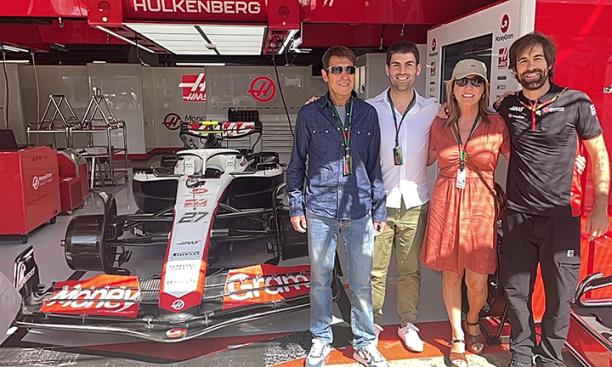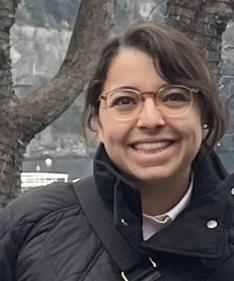
The 2024 Formula 1 schedule goes from March through December this year with 24 races in 21 countries. Thousands of people and machinery crisscross the globe in a sort of traveling circus. Chiazza works mostly in the factory, but he and his team take turns traveling to about one-third of the races. Formula 1 cars have many sensors that collect data on how the car is performing, and Chiazza is one of the people who analyze that data and use it to modify the team’s car all season long. “We are in charge of developing a lot of methodologies for that analysis and performance in ventilation,” Chiazza says. “We are always looking to optimize the current car.”
As part of the aerodynamics team at Haas, Battat says, she spends a lot of time in Ferrari’s wind tunnel in Italy. “When we are in the wind tunnel, we’re operating 24 hours a day and we always have an aerodynamics engineer on staff who is ensuring that tests of different aerodynamic surfaces are maintaining a certain quality level, and then we’re processing data live to adjudicate options and to decide the next course of action in real time.
“The other part of my time I spend at the office, doing data analysis,” she says. “Now I’m developing aerodynamic surfaces to be tested and eventually make their way to the full-scale car. I’d say it’s a combination of aerodynamics surfacing, aerodynamic concept work, and data analysis, to support the team in the effort to design” a better car.
Chiazza grew up in Spain and Italy, near the Emilia Romagna racetrack in Imola, and earned a master’s degree in mechanical and aerospace engineering from Princeton. He heard about the aerodynamicist job from a friend from his undergraduate days in Spain. Battat majored in physics at Princeton. When she decided to not work in academia, she came across an opening with the aerodynamics team at Haas. They both say they were drawn to Formula 1 because they saw an opportunity to see their work and designs get created and used in the real world at a fast pace.
After each race, Battat says, “we kind of shake the car down initially, we see how the drivers respond. There’s a whole group of people, Stefano being one of those people, who’s connected to what the track performance is of the car, they deliver that information to the aero department, and we react accordingly in development. You’re always responding in real time to the data that is being acquired on track. And then, of course, Formula 1 tracks differ from location to location. There are some places where one characteristic, for instance, having more downforce is more desirable. In another location, it’s a different requirement.”
As the season progresses, the car will get modified and updated. Chiazza says, “It is very important for me to stress the fact that last season’s car will be an inheritance of this season. So, it was never a full reset. It is also about building up. That’s a very cool thing because it can be extremely innovative in a creative environment, where an idea can change everything.”

